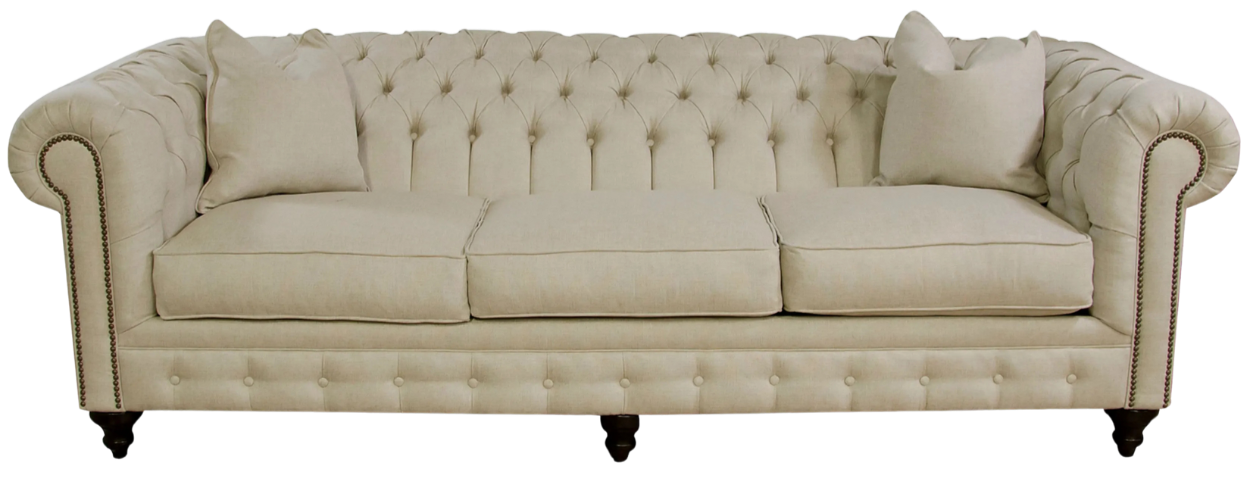Your Cart is Empty
RUGS
FURNITURE
7 Furniture Tips You Need To Know

Where you place your furniture in a room will instantly set the tone for how you'll live in that room. Here are seven must-know tips from designers that we share with customers and clients often.
1. Get Out the Tape Measure - And Measure Twice!
The first step in arranging a space is determining its size. Use a tape measure to get the dimensions of a room. Or, a quick tip: Measure your foot and then walk heel to toe across the room. This is an easy way to estimate the basic size. Then, check the dimensions of the hallways, stairs and door widths leading to the space. This is the eternal challenge for a homeowner, being sure the entrance and egress of the room are large enough for potential purchases. - HGTV

2. Focal point:
Identify the room’s focal point — a fireplace, view, area rug, or work of art etc.— and orient the furniture accordingly. If you plan to watch television in the room, the ideal distance between the set and the seating is three times the size of the screen (measured diagonally). Therefore, if you’ve got a 40-inch set, your chair should be 120 inches away. - Fred Albert
3. Bring in your largest, necessary piece of furniture:
In the living room, this would be your sofa; in the bedroom, your bed; and in the dining room, your table. This piece of furniture must be in the correct place before anything else will work. Identify traffic patterns and avoid setting up an obstacle course. Don’t block doorways, windows or views to other rooms, if possible. Then, orient the rug accordingly. Consider these factors before you begin moving your furniture in. - Tanya Lee

4. Balance:
The balance of a room is affected by both the placement of furniture and the size of each piece. If all of the big pieces are crowded to one side of the room, it will be off-balance horizontally. If much of the furniture is either too bottom-heavy or too top-heavy, a room will be off-balance vertically. If you push all the furniture against the walls, the room will look smaller. - Lauri Ward

5. Symmetrical Layout:
If your fireplace is centrally located within a wall and is flanked by windows or bookcases that are the same dimensions on each side, then you’re dealing with a more traditional space and personality—which speaks to a more traditional furniture placement. Pairs are important here. Flank a pair of comfortable and inviting chairs on either side of the fireplace.
Place your sofa directly facing the fireplace and you now have a comfortable conversation area.
Situate a cocktail table, ottoman, or other surface in front of the sofa.
Dress the mantle with a mirror, art, and other accessory pairs.
Anchor the area with a beautiful area rug and make sure to relax the formality and potential stiffness with some colorful objects and textures.
Asymmetrical Layout:
In a more energetic space with the varied details, irregular nooks and crannies the fireplace that is off-center can create a more challenging space to layout.
You may still be able to place the sofa directly in front of the fireplace, but if that isn’t an option, consider positioning the furniture on a rug set on a slight diagonal turn.
Make sure that the floating furniture situated on that rug are positioned at right angles with each other. It’s all about the relationship within the grouping itself.
For a more informal atmosphere, a more casual accessory placement above the fireplace mantle is expected.
Just make sure there is a balancing act between all elements within this asymmetrical space. - Lori Gilder
6. Furnishing Tips:
Here are a few things to think about as you select furnishings for your space:
Metal, stone and straight edges convey a rigid, but orderly feel, while woods and curves are softer and more casual.
Solid colors tend to complement, while complex patterns draw attention.
It’s okay to mix contemporary furniture with traditional, but look for items that can complement each other through shape, color or texture.
Modular furniture (ie sectional sofas and stackable storage units) allows for an endless array of arrangement possibilities and provides a cohesive look. - Garrison Hullinger

7. What About The Rugs!
Using area rugs is a great way to define seating areas, but the number one mistake people make in the living room is using an area rug that's too small. Remember that all of the furniture should be able to comfortably sit on the carpet. If space doesn't allow it, make sure that at least the front legs of any large upholstered pieces are on the rug. (Small pieces like side chairs and tables should always have all four legs on the rug.) - Lauren Flanagan
Be sure to take a look at our Rug Placement Diagrams to give you an even clearer picture of how furniture and rugs work together to make a cohesive design that is livable, comfortable, and above a beautiful space where you and your family enjoy spending time.
Follow these tips and you are sure to create a space you and your family will enjoy for many years to come (or until you decide to have fun and change things up again).
Our showroom consultants can also help you to select the right combination of pieces as well as custom options that will truly be an expression of your unique style. Visit our showrooms in Portland, OR to see all your choices.
Have any space planning or other home decor questions? We'd love to help you out. Ask away in the comments section below.




